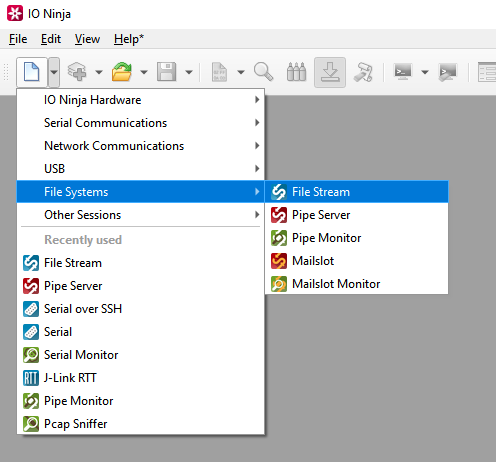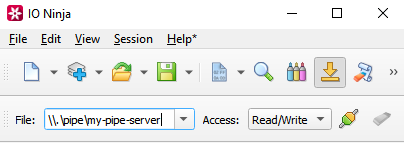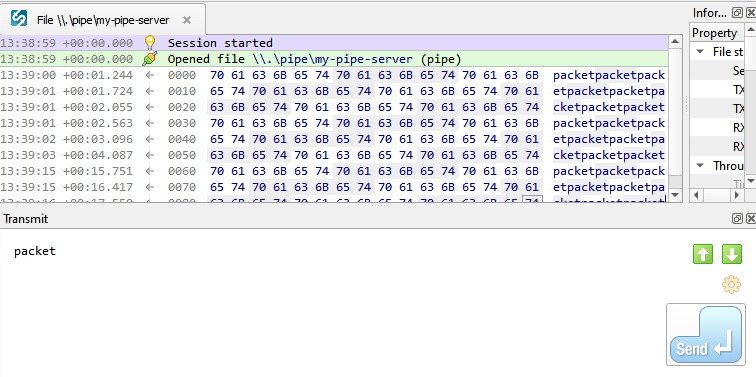File Stream
In computing, a “file” is a fundamental Input/Output (IO) primitive offered by operating systems, representing an abstract device that supports standardized read and write operations. Beyond physical files on disk, this abstraction includes various IO endpoints such as named pipes (FIFOs in UNIX), windows mailslots, serial ports, device devices and other objects accessible via a filesystem names. The File Stream plugin facilitates direct interactions with these file-like objects.
Basic Setup
In IO Ninja, click the “New Session” dropdown and select a new “File Stream” session

Enter the name of your file, e.g. a pipe or mailslot into the “File:” field.

Note
For example, for the a pipe called “my-pipe-server”, you would type \\.\pipe\my-pipe-server.
Set the file access setting from the “Access:” dropdown menu.
Note
Some devices are read-only, meaning they cannot be opened for writing. Mailslot files, for instance, can be opened in write-only mode because the server side of the mailslot is read-only. Similarly, if you want to simply dump data to a disk file, you must open it as write-only. Otherwise, IO Ninja will read the contents of the file and close it once the reading is complete.

Press the “Open” button to the right of the “File:” and “Access:” fields.

Communicate with the file as required using the Transmit pane.

Settings

Setting |
Description |
Default |
|---|---|---|
File name |
Specify the file name to open. |
|
Access mode |
Access mode for the file, e.g., “Read/Write”, “Read-only”, and “Write-only”. |
Read/Write |
Read parallelism |
Maximum number of read requests to submit to |
4 |
Read block size (B) |
The size of each individual read block submitted to |
4KB |
RX buffer size (B) |
The full size of the incoming data ( |
16KB |
TX buffer size (B) |
The full size of the outbound data ( |
16KB |
Keep read block size |
Don’t merge read blocks in RX buffer. Incoming data blocks coming in quick succession can be merged together so that IO Ninja writes them to log as a whole. When this option is set to |
False |
Keep write block size |
Don’t merge write blocks in |
False |
RX buffer full notifications |
Toggle warnings in log about the incoming data ( |
False |